A beautiful plant, which due to the wide species diversity in the natural environment can take on a grassy form, as well as a shrub or tree, is known as hibiscus. The deciduous and evergreen representative of mallow grows everywhere in tropical and subtropical climates. While in temperate latitudes in the open ground single species are able to grow, united under a single name - garden hibiscus, the care and reproduction of which is possible even for a novice.
Material Content:
Types and varieties of hibiscus garden
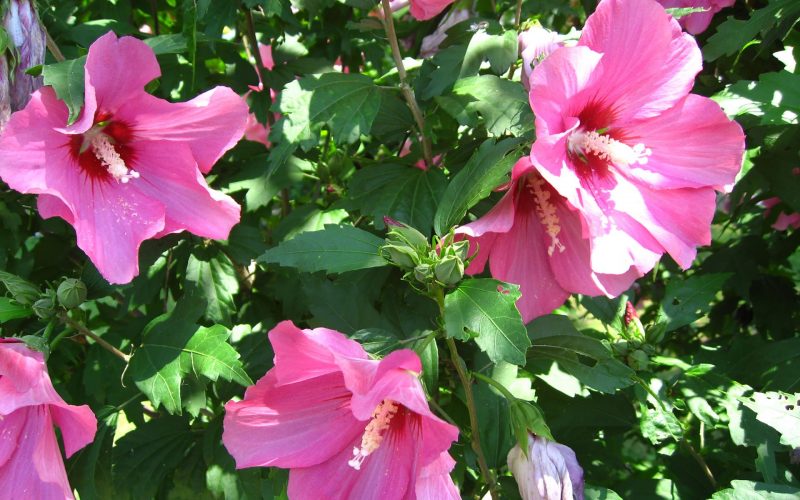
In nature, the genus of hibiscus has more than 300 species, while in Central Russia only three are cultivated in the garden:
- Hibiscus syrian - deciduous shrub, the natural height of which ranges from 5-6 m, is a native of China. On shoots covered with ovoid foliage of intense green color, single flowers of various colors bloom during the flowering period. Popular varieties: "Diana", "Wyelit Ilar Double", "Pink Giant", "Carneus Plenus".
- Hibiscus trigeminal - a highly branched species from Africa, which today can be found in all regions with irrigated agriculture. The variety owes its name to the three-lobed structure of leaf plates, in whose sinuses buds are formed. Flowering, in which yellow flowers with a red core bloom only in the morning, lasts more than a month.
- Hybrid hibiscus - Herbal perennial obtained by crossing several North American varieties, stands out for large flowers with a wide color palette. Among the most spectacular varieties stand out "Youth", "Late", "Pink and Porcelain."
Outdoor landing
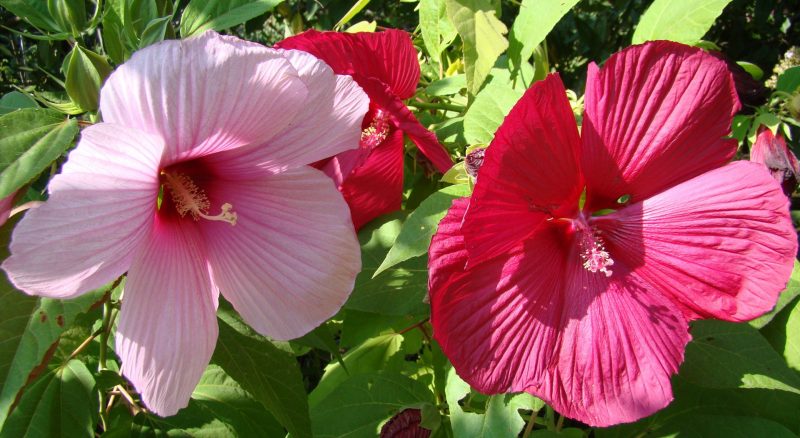
Planting of hibiscus planting material in open ground is carried out in spring after the threat of freezing frost disappears. Landing in the first half of autumn is also allowed.
Site selection and soil requirements

The best place for hibiscus to grow for about 20 years without any discomfort is a sunny, sheltered area with light, fertile soil, which has excellent air and water permeability.
Landing technology
Planting garden hibiscus is carried out according to the following algorithm:
- A landing pit is excavated, the dimensions of which must be twice as large as the root system of the seedling.
- A thick layer of drainage material is placed at the bottom of the pit, which is broken brick, crushed stone or expanded clay.
- The drainage is covered with layers of sand and compost of 15 cm in the following sequence: sand, compost, sand.
- Then the seedling is lowered so that the root neck is slightly deepened.
- The pit is filled with a soil mixture of garden soil, peat and sand in a ratio of 2: 4: 1.
- The planted plant is spudded and watered.
- After drying, the recess is filled with soil, and the trunk circle is leveled.
Attention! If planting is carried out in autumn, then the near-trunk area is mulched.
Crop care
The hibiscus flower will delight the owner with large flowers when meeting basic agricultural requirements.
Watering and mulching
The tropical representative of the garden needs regular watering, the next portion of which should be poured after the soil has dried in the trunk circle. During periods of prolonged drought, hydration is carried out daily.
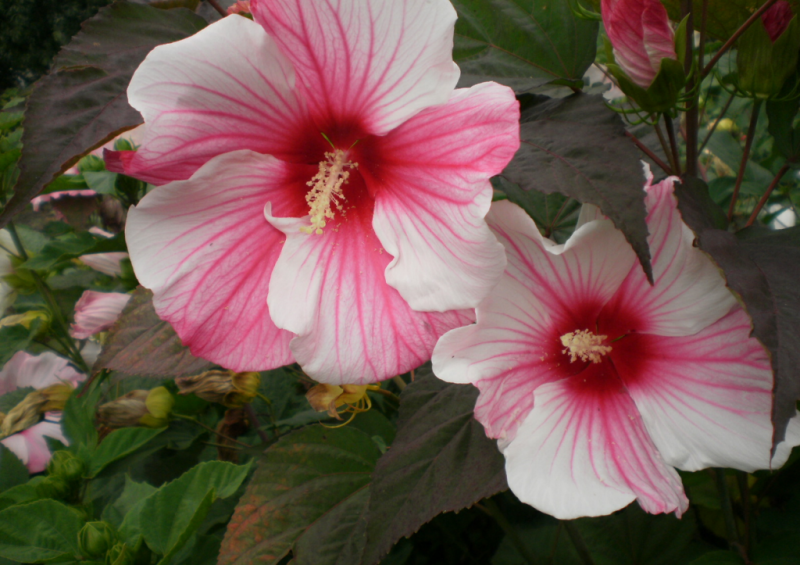
Advice! To preserve moisture in the soil for a longer period, mulching should be carried out, which also enriches the soil with nutrients.
Loosening and removing weeds

The soil under the hibiscus must be systematically loosened in order to maintain the necessary level of aeration and water permeability. During the procedure, weeds are removed.
Top dressing
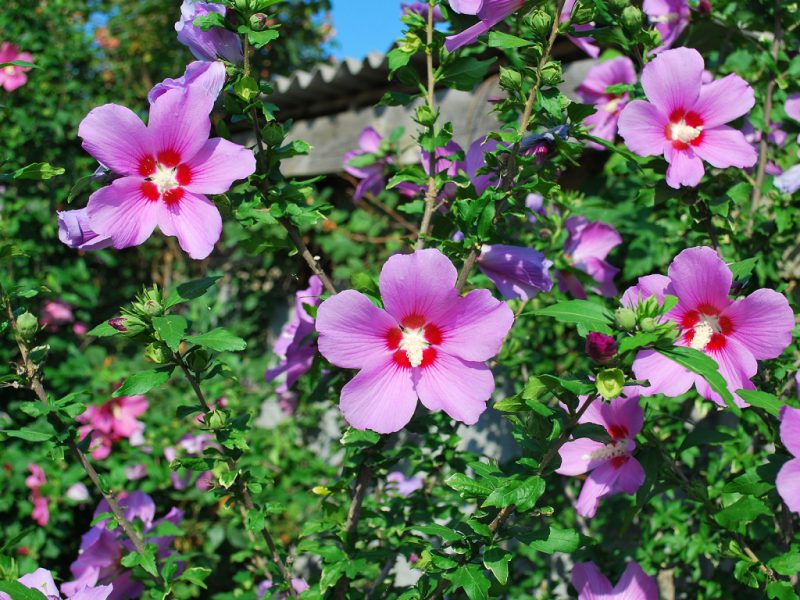
During a period of intensive growth, hibiscus needs regular feeding:
- In the summer, phosphate and nitrogen fertilizers are included in the fertilizing.
- In the first half of autumn, in order for the plant to fully prepare for winter, phosphorus-potassium fertilizers are applied under the bushes.
Pruning
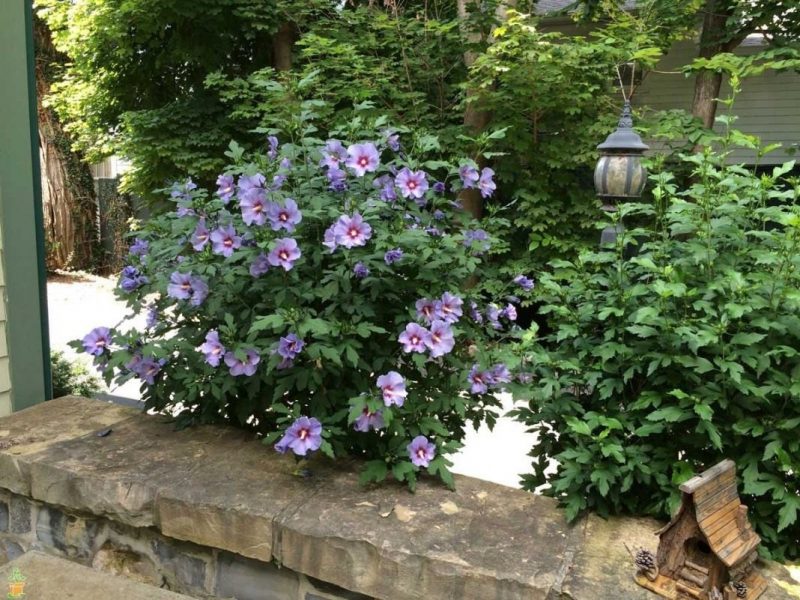
To preserve the decorativeness of the plant, it is necessary to systematically trim, with which various goals are achieved:
- Formative - for the formation of the standard form, the shoots of the planted plant are shortened to the third kidney, keeping only the trunk. Subsequently, all lateral shoots are removed until the trunk reaches the required height when the formation of the skeletal branches of the crown is carried out.
- Sanitary - before the awakening of the kidneys, pruning is performed, in which old, diseased and inwardly growing shoots are removed, last year's branches are also shortened.
- Anti-aging - a haircut at which dried, old shoots are removed and all other branches are shortened to ⅔ part.
Transfer
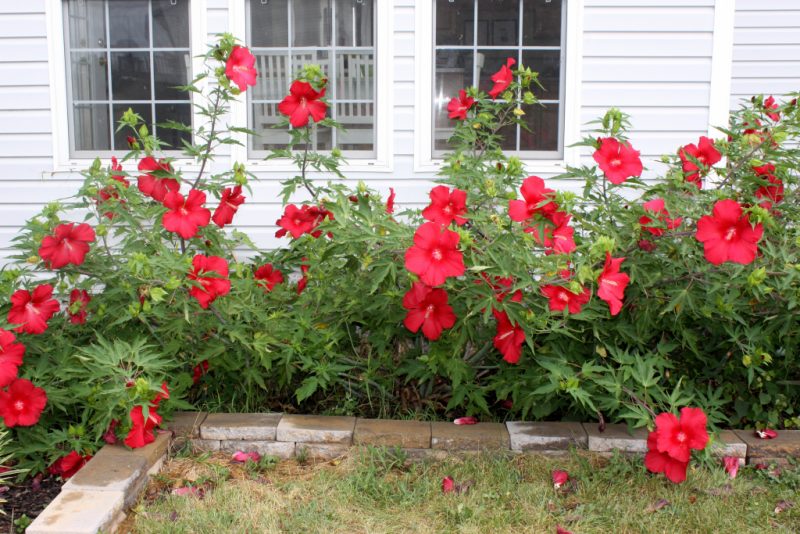
If necessary, transplantation can be carried out only in the early spring after cutting the shoots to half length.
How to care in autumn, winter?
Hybrid hibiscus are winter hardy, therefore, do not need special shelter. It is enough to hilt the trimmed plant and mulch it well with sawdust or garden foliage.

In the case of tree forms, the situation is more complicated:
- In the first case, the plant digs and hibernates in a tub indoors.
- Or hibiscus is provided with a reliable shelter with the help of organic material in the form of spruce branches, which well protects the culture from frost and does not allow heating.
Attention! When sheltering hibiscus with garden spruce, protective measures are carried out aimed at the destruction of mouse-like rodents that feed on the bark of an exotic representative.
Pest and Disease Control
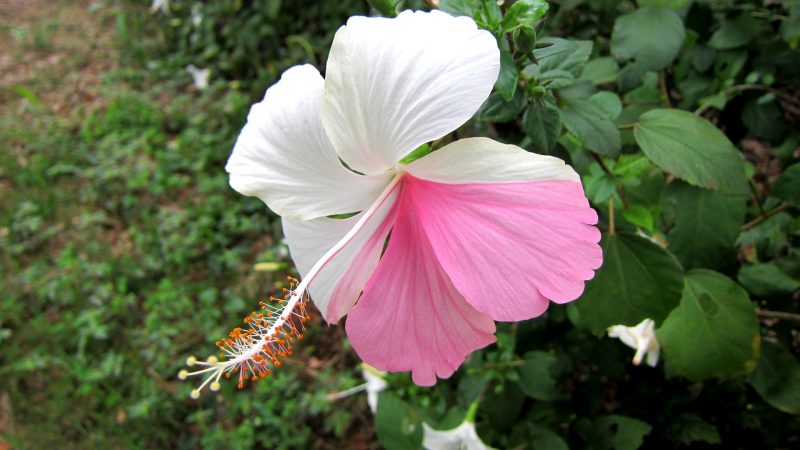
Garden Hibiscus is not susceptible to damage by harmful organisms. However, if the drought persists for a long period, the plant can be attacked by aphids, thrips, whiteflies and spider mites. If insects are detected on the culture, it is necessary to carry out an insecticide treatment in two stages with an interval of 14 days. Among the diseases that are observed on hibiscus, chlorosis stands out due to soil poverty.
Propagation Features
Garden hibiscus propagates, most often with cuttings and seeds.
Cuttings
The procedure is carried out in the summer as follows:
- Cuttings with 2-3 internodes are cut.
- Slice sites are treated with a growth stimulator.
- Cuttings are planted in peat, where they organize the bottom heating.
- After rooting, the cuttings are transplanted into pots with a substrate, where they are located until lateral shoots are formed.
- To stimulate branching, the plant is pinched.
- After the formation of the bush, the culture lands in the garden.
Feature! Subject to all measures, new plants bloom in the same year.
Seed way

Reproduction by seeds is carried out in winter or early spring, when:
- The seed material is soaked in a growth stimulator, after which it is sown in a mixture of peat and sand.
- Crops are covered with glass and placed in a warm, bright place where they organize ventilation and moisturizing at short time intervals.
- After the formation of two pairs of true leaves, seedlings dive into individual pots.
Advice! So that the seedlings do not stretch out due to a lack of light in the winter, artificial lighting should be organized.
The main problems when growing in the garden
Fulfillment of agrotechnical requirements, as a rule, allows avoiding problems arising during cultivation.

However, there are situations when the reason is unclear:
- Yellowing of hibiscus - if the yellowness of the leaves is not due to the lack of watering during a prolonged drought, the reason lies in the lack of iron, nitrogen in the soil or trauma to the root system during the transplant.
- Lack of flowers - if all the requirements for hibiscus gardening are met, the lack of flowering may be due to the poverty of the soil, which must be systematically enriched.
- Falling leaves - if the phenomenon is not observed at the end of the growing season, then the determining factors are insufficient or excessive watering, as well as a damaged root.
Thus, garden hibiscus is an ornamental plant that is able to decorate a site for many years, when simple rules for care are followed.












